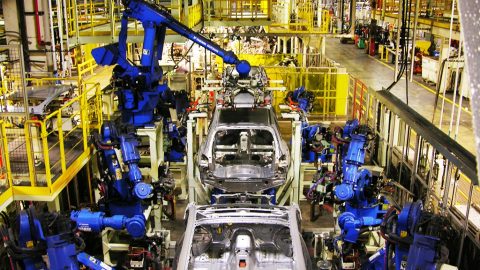
Peek under the plant’s hood and you’ll see that the hidden engine that keeps Subaru humming is GE Digital. The plant uses GE’s iFIX industrial automation software to manage nearly every part of the plant. For instance, iFIX monitors sensors on each of the 1,400 factory motors that guide car bodies through the 1.7-million-square-foot paint shop. The software can quickly alert plant operators to a problem which they can then fix immediately, limiting downtime and mistakes that might come from a defective conveyor belt motor or fluctuating temperatures in the paint shop ovens.
The company also captures and analyzes historical production data to constantly look for ways to improve assembly. That data can also help pinpoint the reason for a problem that might crop up six months after a car has rolled off the assembly line. For instance, if a customer’s car has a brake problem caused by too little brake fluid, Subaru can review specifically how much brake fluid went into that unit on the line.
As new models like the Ascent get introduced, it’s important that the factory can run quickly too. In a recent model change, the plant was able to retool and convert its production line in just seven weeks — an astounding feat for any carmaker, let alone one rapidly producing at significant volume.
Subaru has already expanded its use of iFIX to mobile devices and tablets on the factory floor that display production data from hundreds of machines via the Industrial Internet of Things. The mobile devices mean that teams are never more than a few swipes away from addressing production alerts when they occur.
The company is also exploring how predictive analytics — using data to see problems before they happen — could help limit maintenance downtime on plant parts by only taking machines out of service when they really need it instead of on a cyclical basis. The plant hummed along at 98.6% up-time in 2018, the eighth-straight year that’s risen. The target is to get that to 100%.
Using new technologies is crucial for the plant to continue to expand production too. Lafayette will produce 370,000 vehicles this year — triple the volume of 12 years ago — with the potential to grow to 514,000 in the future.
“Uptime is critical for us — we have a huge responsibility to meet our production targets,” explains Lester.
Source: GE Report